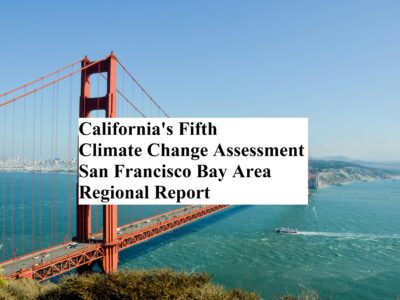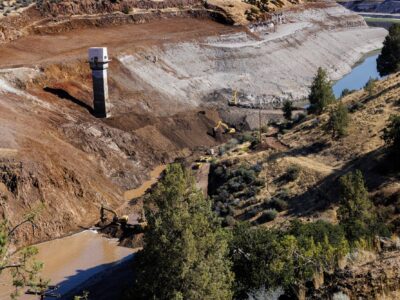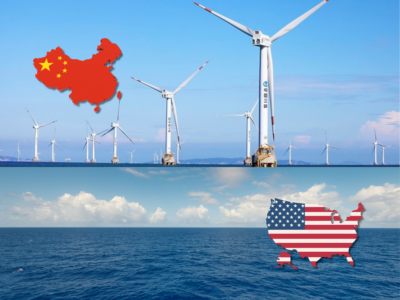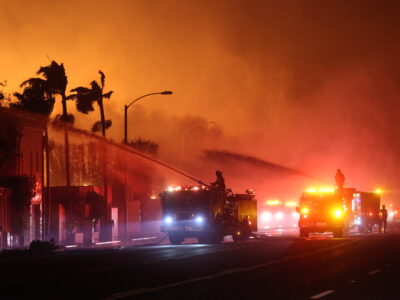California
Help Shape the Bay Area’s Climate Future
Seeking input from local leaders, organizations, and individuals to shape California’s Fifth Climate Assessment for the region
The California Climate Change Assessment is a key initiative to understand and address the state’s climate impacts and build resilience through informed decision-making. California’s Fourth Climate Change Assessment included a series of technical reports, regional summaries, and a statewide synthesis covering key issues such as extreme heat, wildfires, and sea level rise—providing critical guidance for …
Continue reading “Help Shape the Bay Area’s Climate Future”
CONTINUE READINGWildfire Liability in California: A Primer
California has a unique approach to lawsuits against utilities for causing fires.
Like other states, California allows wildfire lawsuits against utilities based on negligence. When a plaintiff can prove that the utility was negligent – in other words, failed to exercise reasonable care – plaintiffs can recover for environmental damage, reforestation costs, and loss of profits. But California also allows recovery even when a utility did nothing wrong, under a theory called inverse condemnation. The PG&E bankruptcy made it clear that no-fault utility liability could threaten the financial health of the power system. The legislature created a new fund to deal with the problem.
CONTINUE READINGSuccess! Removing the Klamath Dams
A “Good News” Environmental Story (For a Change)
Most of the environmental law and policy matters discussed on Legal Planet–especially over the past few months–have dealt with natural resource crises, environmental rollbacks, hostile political actors and actions in Washington, D.C., etc. So let me take this opportunity to share an upbeat and inspirational environmental story in these otherwise troubled environmental times. In 2022, …
Continue reading “Success! Removing the Klamath Dams”
CONTINUE READINGThe CRA and the filibuster
Expanding the scope of the CRA might also result in weakening the filibuster
This is the third in a series of blog posts examining the possible application of the Congressional Review Act (CRA) to California’s waivers under the Clean Air Act allowing the state to issue its own emissions standards for motor vehicles. The first post is here. The second post is here. Another possible implication of applying …
Continue reading “The CRA and the filibuster”
CONTINUE READINGThe CRA and permits
Applying the CRA to the California waivers might open the door to Congressional review of permits more broadly
This is the second in a series of blog posts examining the possible application of the Congressional Review Act (CRA) to California’s waivers under the Clean Air Act allowing the state to issue its own emissions standards for motor vehicles. The first post is here. The basic legal question at the heart of the dispute …
Continue reading “The CRA and permits”
CONTINUE READINGWhat is the scope of the Congressional Review Act?
Possible implications of expanding the CRA to the California waivers, and beyond
The Congressional Review Act (CRA) provides a tool for majorities in the House and Senate, along with the President, to overturn a recently promulgated agency regulation, and to legislatively prohibit promulgation of a “substantially the same” regulation in the future. By its nature – since it requires Presidential approval of the relevant joint Congressional resolution …
Continue reading “What is the scope of the Congressional Review Act?”
CONTINUE READINGCEQA and infill development
SB 607 is an excellent beginning for reforming CEQA to facilitate residential infill development
The state legislature continues its efforts to facilitate more housing production in California. Among the most significant bills being considered this session in Sacramento is SB 607, which would provide some substantial changes to how environmental review under the California Environmental Quality Act (CEQA) would operate. Overall, this is a bill that would provide important …
Continue reading “CEQA and infill development”
CONTINUE READINGTrump’s Offshore Wind Ban vs. China’s Wind Juggernaut
Why is the Trump administration kneecapping the U.S. offshore wind industry while China becomes a global giant?
This January, when I was in Beijing for a workshop at Tsinghua University on offshore wind, presentation after presentation from Chinese experts revealed just how China has become an absolute juggernaut in offshore wind. Professors from the Chinese Academy of Social Sciences and Tsinghua walked us through the governance structure — state planning, targets, industrial …
Continue reading “Trump’s Offshore Wind Ban vs. China’s Wind Juggernaut”
CONTINUE READINGDid California Policies Make the LA Fires Worse?
California’s environmental and climate regulations did not make the climate-fueled Palisades and Eaton fires more destructive or harder to fight. Here’s why.
We know climate change is partly to blame. Are California’s environmental policies regarding land and water management also to blame for the supercharged firestorm that has ravaged Los Angeles? It’s not just conspiracy theories on social media or misguided news stories; that’s the position of some congressional Republicans and President-elect Trump, who hold power over future …
Continue reading “Did California Policies Make the LA Fires Worse?”
CONTINUE READINGHuge Snub for Big Oil at the Supreme Court
Oil companies failed to persuade the justices to shield them from the growing number of state lawsuits seeking damages for the harms caused by climate change.
Big Oil has failed to persuade the U.S. Supreme Court to shield it from numerous state climate lawsuits filed across the country seeking damages for the harms caused by climate change — harms like the historic, supercharged urban fires burning in Los Angeles. The justices held a conference on Friday, January 10 to determine whether …
Continue reading “Huge Snub for Big Oil at the Supreme Court”
CONTINUE READING









